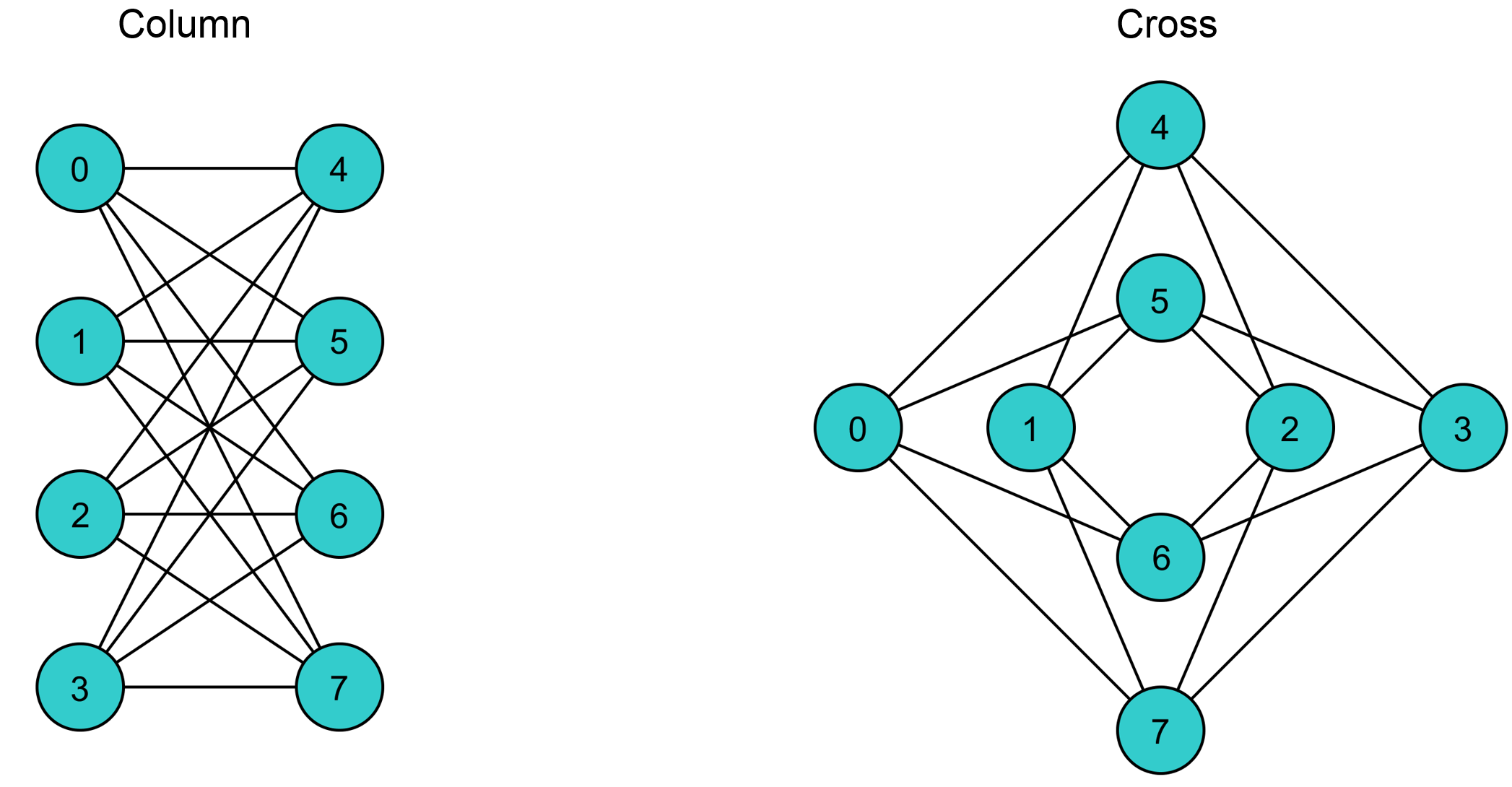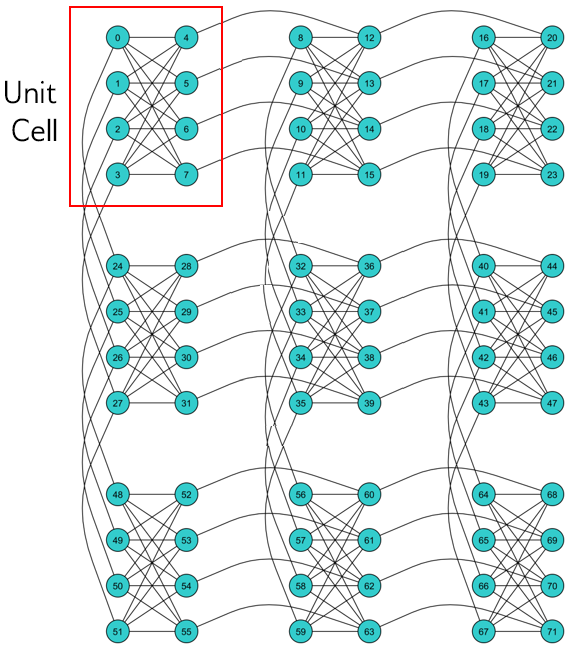Introduction¶
Samplers¶
Samplers are processes that sample from low energy states of a problem’s objective function. A binary quadratic model (BQM) sampler samples from low energy states in models such as those defined by an Ising equation or a Quadratic Unconstrained Binary Optimization (QUBO) problem and returns an iterable of samples, in order of increasing energy. A dimod sampler provides ‘sample_qubo’ and ‘sample_ising’ methods as well as the generic BQM sampler method.
Composites¶
Samplers can be composed. The composite pattern allows layers of pre- and post-processing to be applied to binary quadratic programs without needing to change the underlying sampler implementation.
We refer to these layers as composites. A composed sampler includes at least one sampler and possibly many composites.
D-Wave System Architecture: Chimera¶
The D-Wave system is Chimera-structured.
The Chimera architecture comprises sets of connected unit cells, each with four horizontal qubits connected to four vertical qubits via couplers (bipartite connectivity). Unit cells are tiled vertically and horizontally with adjacent qubits connected, creating a lattice of sparsely connected qubits. A unit cell is typically rendered as either a cross or a column.
Minor-Embedding¶
To solve an arbitrarily posed binary quadratic problem on a D-Wave system requires mapping, called minor embedding, to a Chimera graph that represents the system’s quantum processing unit. This preprocessing can be done by a composed sampler consisting of the DWaveSampler and a composite that performs minor-embedding.

